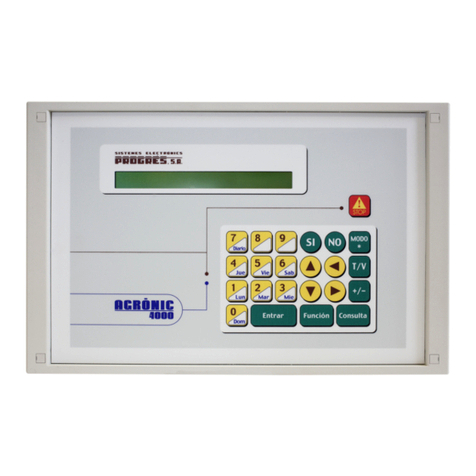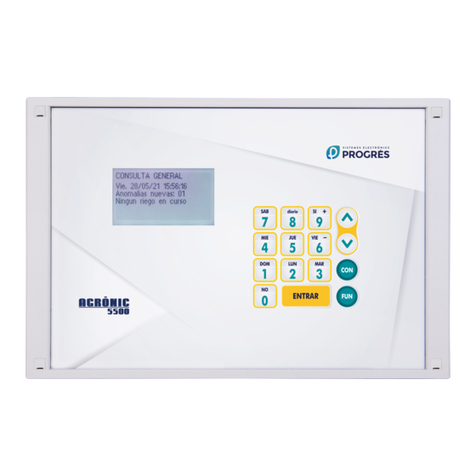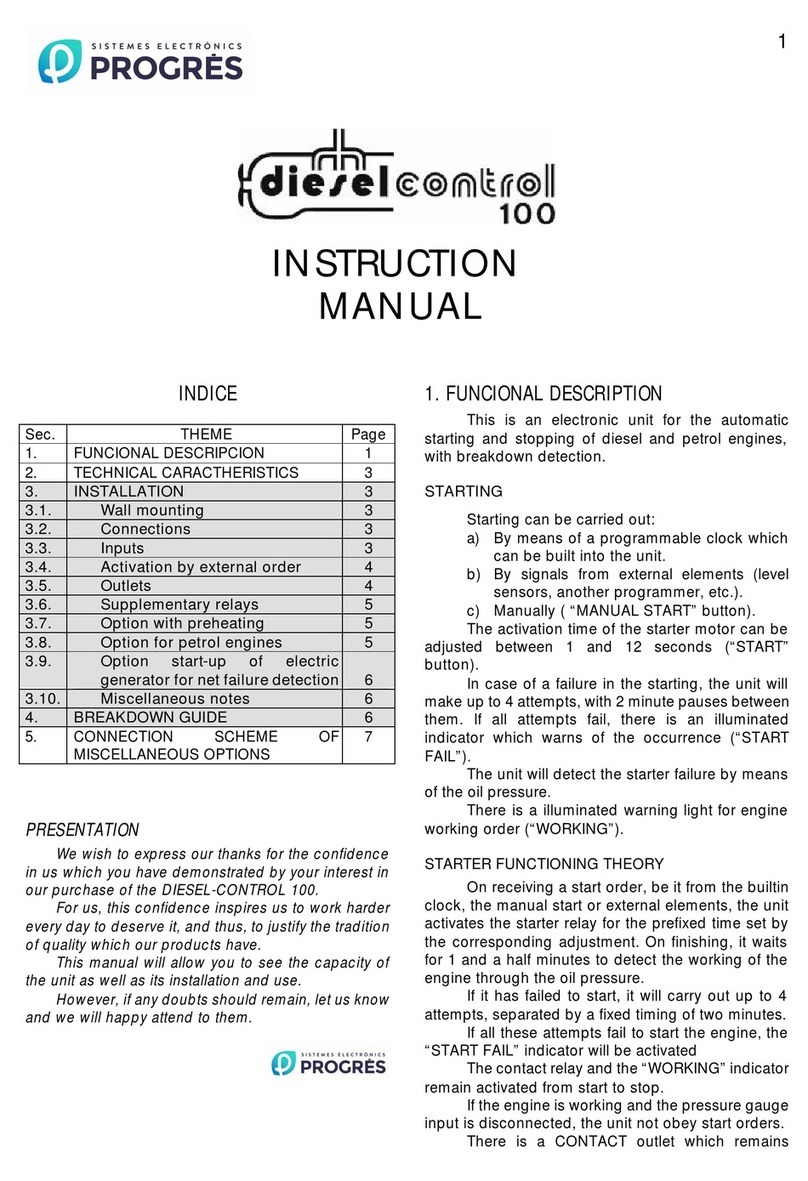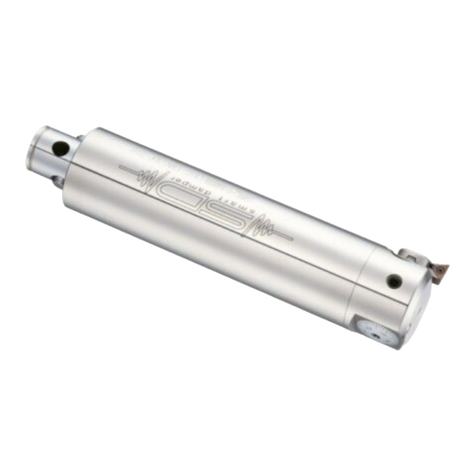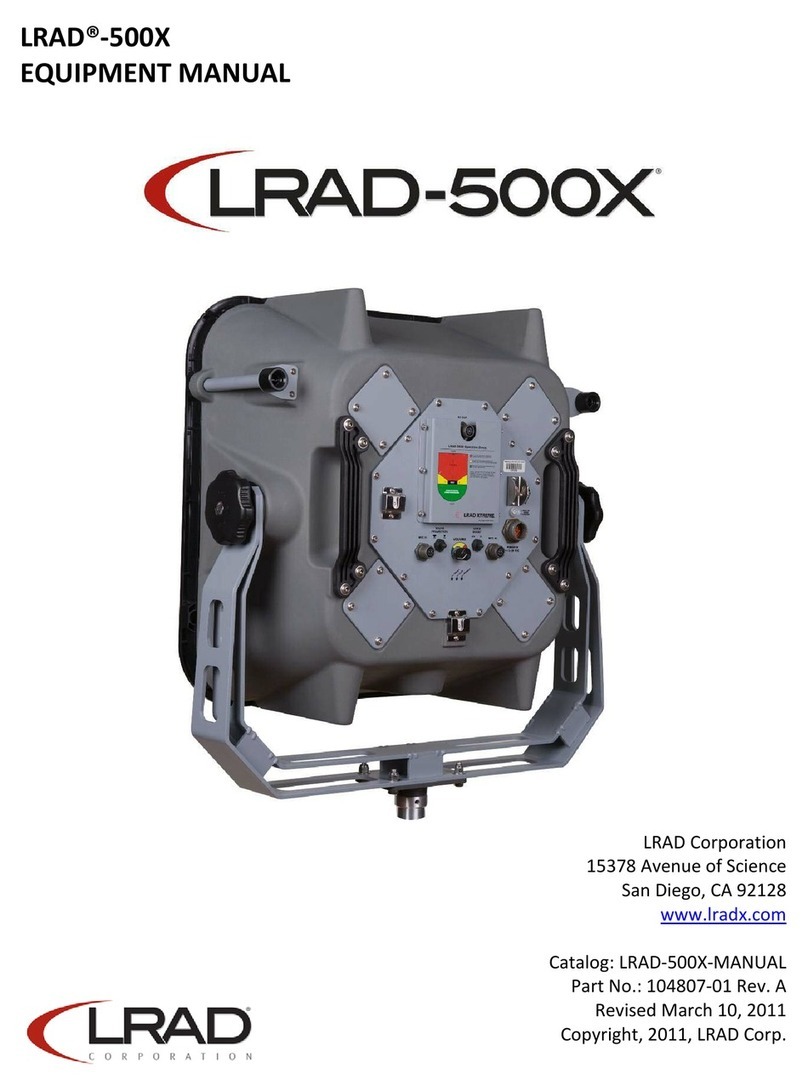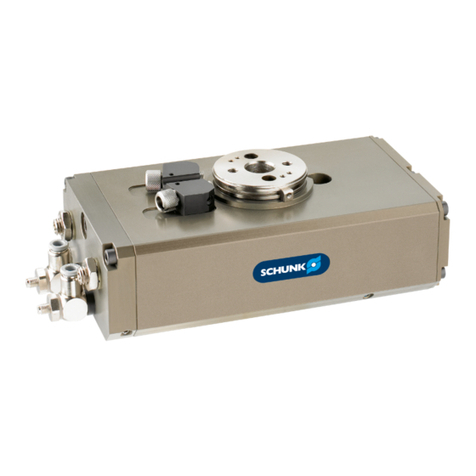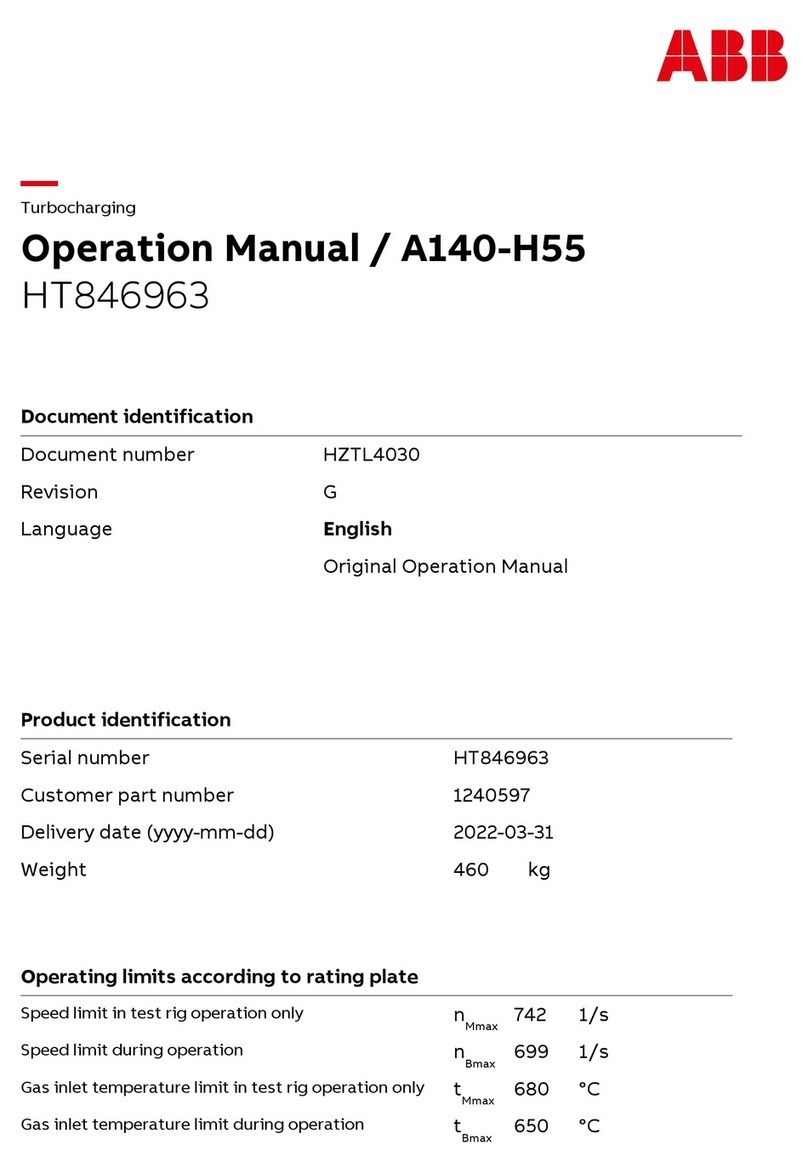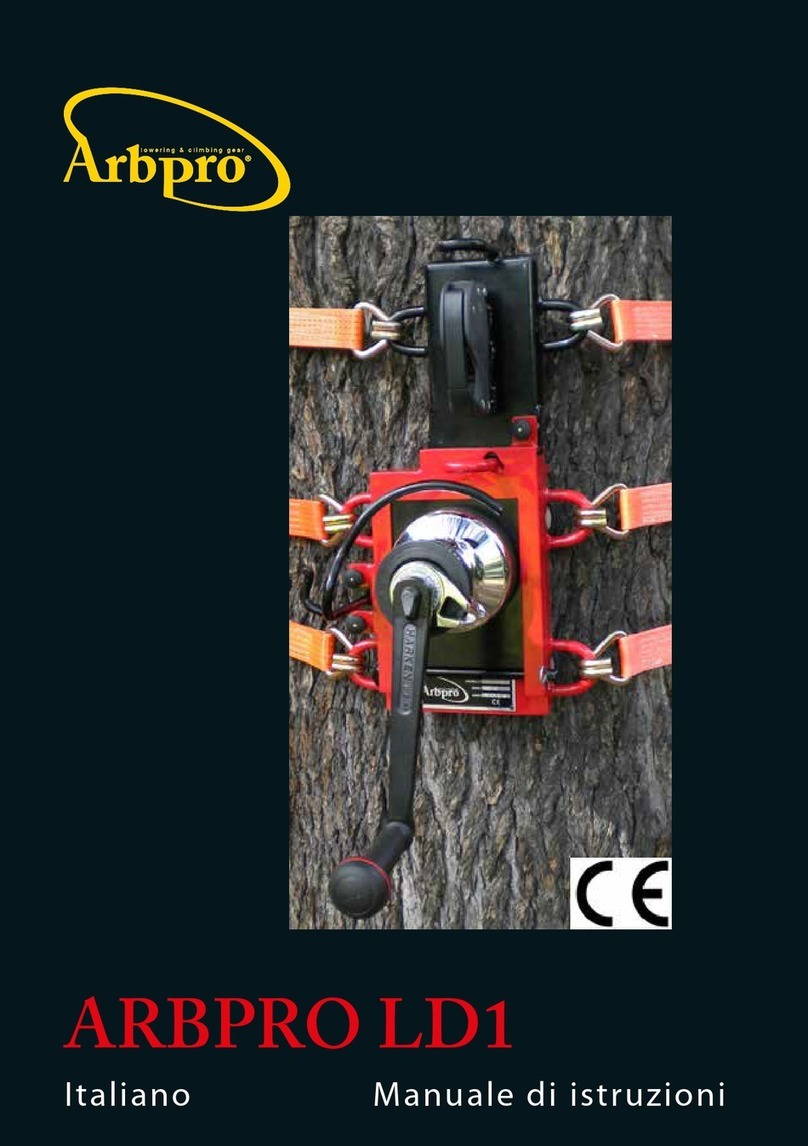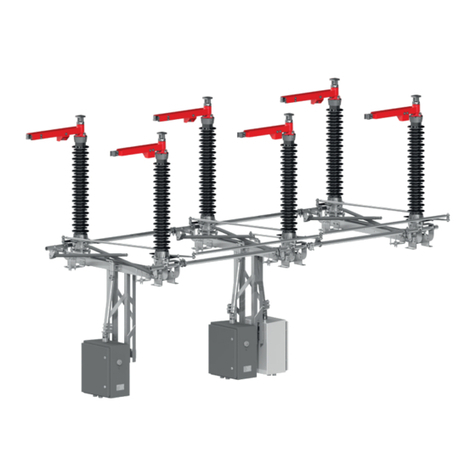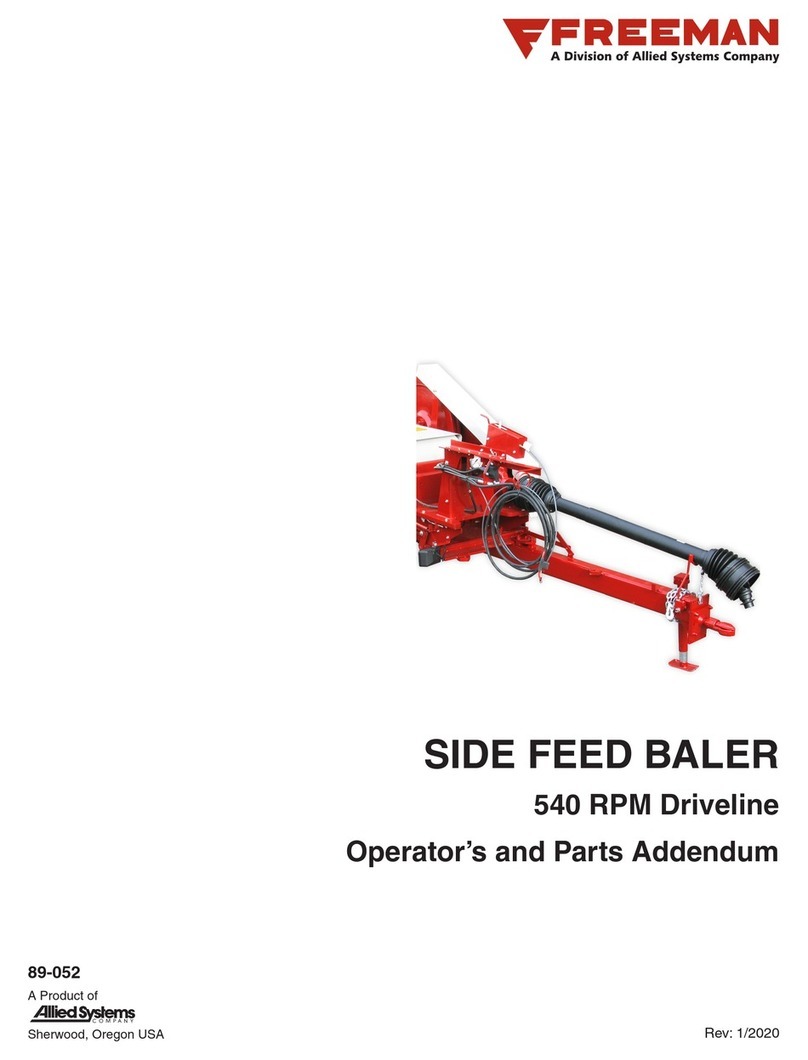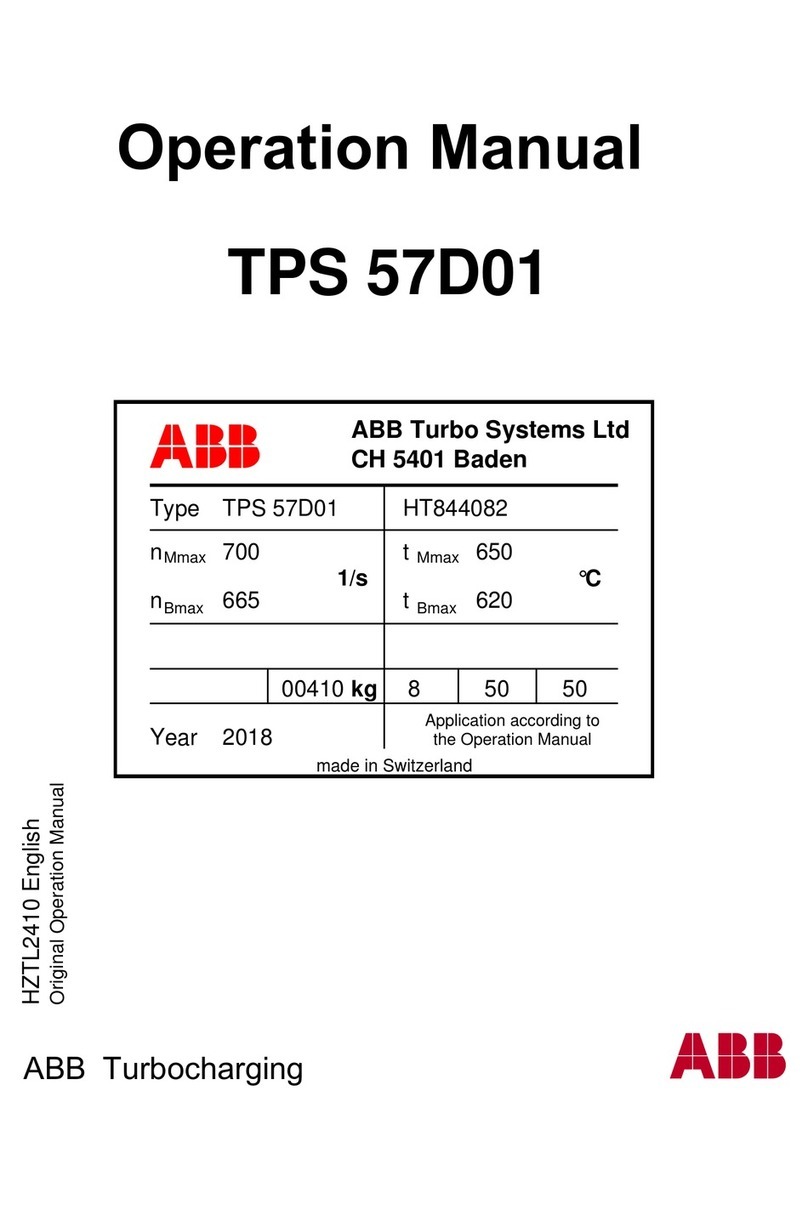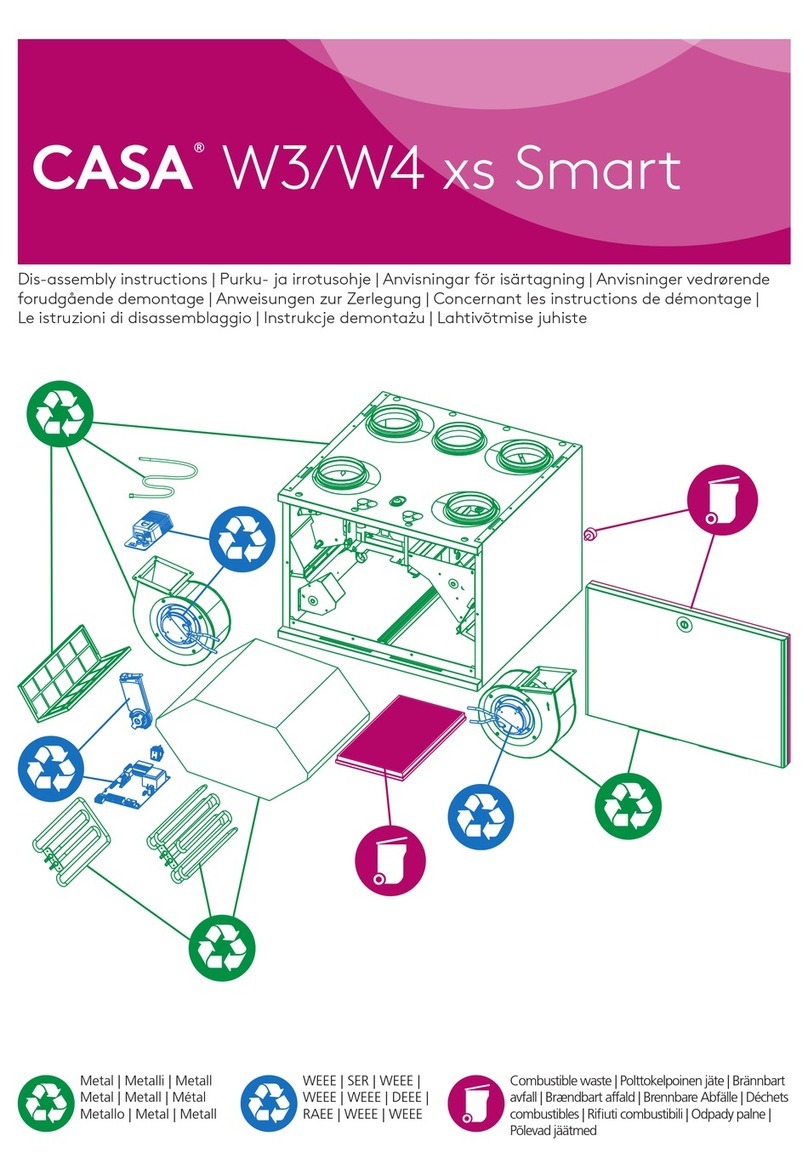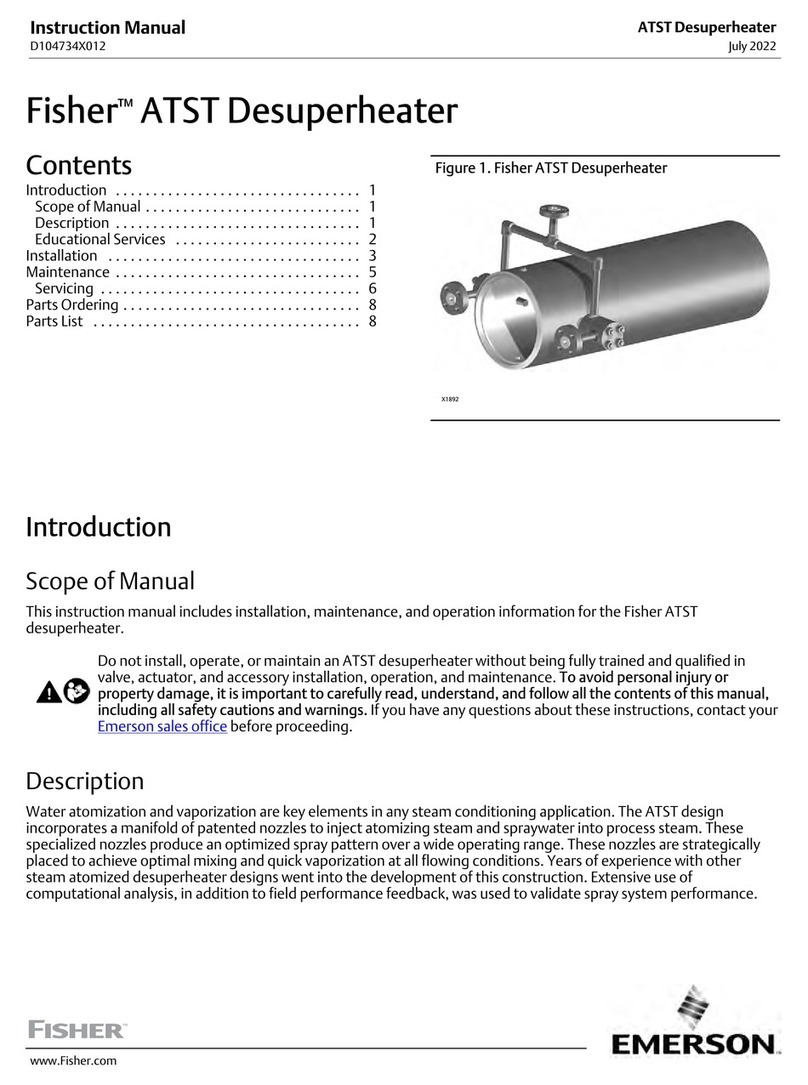Progres AGRONIC 54 User manual

1
INSTRUCTION
MANUAL
24 Vac
INDEX
Sec. Theme Page
INDEX / PRESENTATION 1
1. INTRODUCTION 1
2. SCREEN DATA 2
3. TECHNICAL CHARACTERISTICS 2
4. DIMENSIONS 3
5. TITLE PAGE 3
6. INPUTS AND OUTPUTS 3
6.1. Inputs 3
6.2. Outputs 4
7. CONFIGURATION OF THE INSTALLER
5
8. CONSULTATION 6
9. PROGRAMMING 6
10. CONFIGURATION OF THE USER 6
11. CALIBRATION 7
12. MALFUNCTIONS 7
13. FUNCTION CHART 8
PRESENTATION
We wish to take this opportunity to thank you for
the confidence in us which you have demonstrated in
expressing interest or acquiring Agrónic 54.
This confidence, for our part, stimulates our efforts
to meet and surpass the expectations of our clients to
justify the traditional quality of our products.
This Manual will allow you to see the capacity of
the unit as well as its installation and use.
However, if after reading this you still have any
doubts, contact us and we will happily answer them.
1. INTRODUCTION
Agrónic 54 is a unit which regulates both the
electrical conductivity (EC) of irrigation water, injecting
2 possible fertilizers, and its pH, injecting acid or base.
There are 3 formulas or programs, which are
started by external orders received by the correspond-
ing inputs, so this unit itself does not control the irriga-
tion sectors.
There are 2 versions, according to the way in
which the dosage is done: one with “pulsed injection”,
which works on the solenoids, another one with “ana-
log injection”, which works on frequency variators.
In the “by pulsed injection” version, to maintain
the EC, the unit applies every certain seconds, a dose
of every fertilizer, which is related to the desired pro-
portion between fertilizers and the programmed refer-
ence. To maintain the pH the unit works in a similar
way.
In the “analog injection” version, to maintain the
EC and/or the pH, the unit changes the injection
speed of the engines until it gets the programmed
references.
In the version with pulsed injection, there are out-
puts for 2 fertilizers and 1 acid or base.
In the version with analog injection (0-10 Vdc),
there is an output for fertilizer and another one for acid
or base.
In both versions, there is also a general output
and another one for alarm and/or mixer.
Feeding of the unit at 24 Vac. Optionally, 12 Vdc.
Outputs at 24 Vac in the version with pulsed in-
jection and at 0-10 Vdc in the version with analog in-
jection.
There are 3 inputs for the start of the fertilization
programs and 1 input to detect malfunctions.
There is also 1 input for the conductivity sensor
and 1 for the pH sensor, with a transmitter, which is
integrated in the unit circuitry.
The calibration of sensors is done with the key-
board.

2
It is possible to program three different crops.
The EC reference, pH reference and the proportion of
two fertilizers to be applied (this is in the version with
pulsed injection) are given to every one of the three
programs.
There are independent EC and pH alarms, being
possible to configure the high value, the low one and
the delay in the detection of an irregularity.
Start and stop times are programmable for the
pre-mixing, mixing and alarm.
Configurable lag for the detection of the start up
and malfunction inputs.
It is easy to use and program by means of three
keys and a LC screen with 13 millimeter-high digits.
The unit is located in a poly-carbonate closed
box.
Agrónic 54 follows the CE guidelines.
2. SCREEN DATA
Information is displayed on the screen in the fol-
lowing way: the first two digits indicate the code in
which we are in. The following block of digits always
gives information about the electrical conductivity or
fertilizer 1, while the last block of digits makes refer-
ence to the pH or fertilizer 2.
Use the “C” key to go from one code to the next
one. If you keep pressing this key, the code will
change rapidly.
Use the “+” and “-“ key to modify the values
which are displayed on the screen. These keys will
increase or decrease the active value, which is dis-
played in that moment. If you keep pressing the key, it
increases or decreases rapidly.
3. TECHNICAL CHARACTERISTICS
Power supply
Power source 24 Vac ±10%
Energy consumption Average consume: 8.5VA
Input fuse 2.5 A, F type, 250 V (fast)
Outputs Inputs
Number 5 Number 4
Type Relay, Triac optolinked Type Optolinked
Environment Weight (approximate) Memory backup
Temperature 0 °C a 45 °C 1 Kg. Parameters, programs It cannot be erased
Humidity < 85 %
Height 2000 m.
Pollution Grade II
DECLARATION OF CONFORMITY
It follows the 89/336/CEE Guidelines for the Electromagnetic compatibility and the 73/23/CEE
Guidelines of Low Tension for the Fulfillment of the Product Security. The fulfillment of the follow-
ing specifications was demonstrated as indicated in the Official Diary of the European Communi-
ties.
Symbols which can be displayed on the product Double insulation
This symbol indicates that the electrical and electronic equipment should not be disposed of as gen-
eral household waste at its end-of-life. Instead, the product should be handed over to the applicable
collection point for the recycling of electrical and electronic equipment for proper treatment, recovery
and recycling in accordance with your national legislation.

3
4. DIMENSIONS
All measures in mm.
5. TITLE PAGE
6. INPUTS AND OUTPUTS
6.1. INPUTS
The unit has four digital inputs (D1, D2, D3, D4).
Three of them work as switches (D1, D2 and D3),
starting or stopping the corresponding program, while
the fourth one is a malfunction input (D4).
The activation of inputs is done through their
connection to the common.
A time for the detection delay can be configured
for every input, but the deactivation is immediate.
The pH and conductivity reference, as well as the
proportion between fertilizers can be configured for
every input or program 1, 2 and 3. If more than one
input is activated at the same time, the program which
has priority is the one with the lowest cardinal number.
Input 4, malfunction, is only taken into account if
a program is working.
The unit also has an input for pH sensor (terminal
type BNC) and another one for conductivity sensor.

4
SECTION OF THE UNIT SUPERIOR BOARD
VERY IMPORTANT: The grid must be connected
to the box terminal of the unit.
6.2. OUTPUTS
The unit has 4 or 5 outputs, 2 of them are digital
and the other can be 3 digital, in “pulsed injection”
units, or 2 analog outputs in units with “analog injec-
tion”.
Output 1 Output 2 Output 3 Output 4 Output 5
A-54
pulsed
injection
Digital Digital Digital Digital Digital
A-54
Analog
injection
Analog
0-10V
Analog
0-10V
Analog
outputs
common
Digital Digital
Outputs are protected by a 2.5 A fuse type F
(fast). Replace it with a similar one if it fuses.
SECTION OF THE UNIT INFERIOR BOARD
-S1, S2 and S3 (A-54 pulsed injection): Digital out-
puts for the injection of acid or base and fertilizer
by pulses. The acid or base electrovalve is con-
nected to S1, the fertilizer number 1 electrovalve
to S2 and the fertilizer number 2 electrovalve to
S3. Electrically, the electrovalves will be con-
nected directly to the outputs without any relay in
between and hydraulically they will be connected
to the Venturis or to the magnetic pumps.

5
-A1, A2, (A-54 analog injection): Analog outputs
from 0 to 10 volts to connect to frequency varia-
tors or regulators. It is important neither to short-
circuit these signs nor to put the cables near
power lines. Output A1 corresponds to fertilizer
and A2 to acid or base. The symbol is the
common output or 0 volts.
-S4 (in two versions): Digital output, which is acti-
vated during the whole irrigation, except when
there is a malfunction.
-S5 (in two versions): Digital output used both for
the start and stop of mixers and for malfunction
detection. For a shared use of both functions, it is
necessary to use a relay activated by the general
output. If it is activated, the mixers will work, but if
it is deactivated, the alarm device will work.
7. CONFIGURATION OF THE INSTALLER
This configuration must be done by the unit in-
staller. Press the “+” and “-“ keys at the same time to
access it. Press the “C” key to go to the following
code. Press the “+” and “-“ keys to change the val-
ues. Press the “C” key until the C0 code is displayed
to go back to CONSULTATION.
-Code 00: Delay until the first regulation. Indicate
the time in seconds that the programmer must
wait to calculate the regulation when a program is
started. During this time, the % of applied injec-
tion will be the one memorized in the last irriga-
tion. This allows the injection stabilization. The
value must be between 0 and 250.
-Code 01: Reaction delay. Indicate the time in
seconds that the programmer must use to carry
out the adjustment to be done. The maximum
time is 5 seconds. Time 0 indicates that the ad-
justment must be done as soon as it is detected.
-Code 02: Self adjustment delay. Indicate the time
in seconds that must go by between a self-
adjustment attempt and the next one. The self-
adjustment is a small increase or decrease of the
% of injection which is introduced when the sen-
sor value is outside the programmed reference
value but within the allowed error. The minimum
time is 4 seconds and the maximum is 15.
-Codes 03, 04 and 05: Proportional bands. The
limits, within which the % of injection will be cal-
culated, must be indicated in these three codes,
one for every program. The lower the limit, the
more abrupt the changes will be when trying to
obtain the desired reference. The value can be
between 0 and 9.9, although the normal is 2.0.
-Code 06: Modulation cycle (*). Indicate, in sec-
onds, the frequency in which the injection im-
pulses will be repeated. A suitable value would be
between 2.0 seconds and 4.0 seconds, although
it can go from 2.0 to 9.9 seconds.
-Codes 07, 08, 09 and 10: Delay. Indicate, in sec-
onds, the time that has to go by from the moment
the activation of an input is detected until the pro-
grammer takes it into account. The value must be
between 0 and 250.
-Code 11: Acid o base. In this code it can be se-
lected how it will work the pH regulation in the ir-
rigation water, by means of acid or base. If it
leaved the value to 0 it will work like an acid, and
if it is modified with the “+” key and leaved to 1 it
will work like a base. Then, it will be determinate if
there is an acid or base tank.
(*) In the “by impulse” version, to maintain the EC, the
unit applies every certain seconds, a dose of every fertilizer,
which is related to the desired proportion between fertilizers and
the programmed reference. To maintain the pH the unit works in
a similar way. In the “analog” version, to maintain the EC and/or
the pH, the unit changes the injection speed of the engines until
it gets the programmed references.

6
8. CONSULTATION
The first two codes of the programmer corre-
spond to consultations of the unit state (C0 and C1).
-Code C0: It shows the conductivity and pH read-
ing that reach the unit through the sensors. If a
malfunction takes place, the programmer shows
this code and the alarm origin (program number)
intermittently, and the reason for it (high or low
conductivity, high or low pH, malfunction input).
For further information read the section MAL-
FUNCTIONS.
C
0
2.
4
6.
5
Reading of the
conductivity sensor
Reading of the
pH sensor
-Code C1: It shows the percentage of fertilizer in-
jection, which has the highest proportion, as well
as the percentage of acid or base, which is being
injected.
C
1
2
1
3
3
% of fertilizer be-
ing injected
% of acid or base
being injected
9. PROGRAMMING
The codes that go from C2 to C7 are used to de-
fine every program, having to specify the desired level
of conductivity and pH, as well as the relationship
between the injection of the two fertilizers.
Every code is divided into two sections. The first
one corresponds to values of conductivity or values
from the first fertilizer, while the second one corre-
sponds to values of pH or of the second fertilizer.
Press the “C” key to change section or code and the
“+” and “-“ keys to increase or decrease the value of
the section which is active, that is to say the one which
has a blinking point on its left.
A point showed just after the code means that
the program is activated.
-Codes C2, C3 and C4: Indicate the desired refer-
ence value for conductivity (value from 0 to 9.9)
and pH (value from 0 to 9.9) which is to be
reached when program 1, 2 and 3 are activated.
The value 00 means that this part is not to be
regulated.
C
2.
2.
6
6.
3
Activated
program
Conductivity reference
(program 1)
pH reference
(program 1)
-Codes C5, C6 and C7: Indicate the desired pro-
portion between the fertilizers of every one of the
three programs.
C
6
3
0
11
Non activated
program
Proportion of fertilizer
1. (program 2)
Proportion of fertilizer
2. (program 2)
10. CONFIGURATION OF THE USER
In this section we can find the parameters which
allow you to adjust the working of the unit, as well as
the sensor calibration. To access this section, press
the “C” and “+” keys at the same time when the pro-
grammer is at code C0 of consultation. If no input is
activated, the programmer goes to sensor calibration;
otherwise, it goes directly to the first configuration
code (code 04).
Press the “C” key to go from one code to an-
other. Use the “+” and “-“ keys to change values.
Press the “C” key until the code C0 appears to go
back to consultation.
Codes from 00 to 03, corresponding to calibra-
tion are explained in the CALIBRATION section.
-Code 04: EC high alarm. Indicate the value at
which the indicated reference has to be sur-
passed (between 0 and 9.9) in order to activate
the alarm because the conductivity level is too
high.
-Code 05: EC low alarm. Indicate which value (be-
tween 0 and 9.9) can be reached below the de-
sired reference in order to activate the alarm be-
cause the conductivity level is too low.
-Code 06: pH high alarm. Indicate the quantity of
points (between 0 and 9.9) the indicated refer-
ence can be surpassed in order to activate the
alarm because the pH level is too high.
-Code 07: pH low alarm. Indicate the quantity of
points (between 0 and 9.9) below the indicated
reference must be reached in order to activate
the alarm because the pH level is too low.

7
-Code 08: Delay in the EC alarm detection. Indi-
cate the number of seconds during which con-
ductivity must be at an alarm level before its acti-
vation. The value must be between 0 and 999.
-Code 09: Delay in the pH alarm detection. Indi-
cate the number of seconds during which pH
must be at an alarm level before its activation.
The value must be between 0 and 999.
-Code 10: Pre-mixing. Indicate the number of sec-
onds during which the mixer must be working be-
fore injection is started. The value must be be-
tween 0 and 250.
-Code 11: Mixer working. Indicate the number of
seconds the mixer must be working in the mixing
cycles, which take place during the fertilization.
The value must be between 0 and 250.
-Code 12: Mixer at stop. Indicate the number of
seconds the mixer must be at stop in the mixing
cycles, which take place during the fertilization.
The value must be between 0 and 250.
-Code 13: Alarm working. Indicate the number of
seconds the alarm must be working in the cycle
of alarm signal. The value must be between 0 and
250.
-Code 14: Alarm at stop. Indicate the number of
seconds the alarm must be at stop in the cycle of
alarm signal. The value must be between 0 and
250.
11. CALIBRATION
In the configuration of the user, codes from 00 to
03 are used to calibrate sensors. On entering in eve-
ryone of the codes, the code and value which is ex-
pected from the sensor appears for a few seconds.
After these seconds, the screen blinks and displays
the reading, which is being obtained from the sensor.
If the reading is stable enough and similar to the de-
sired one, the screen stops blinking after approxi-
mately 10 seconds, indicating that the sensor has
been calibrated. If you press the “+” and “-“ keys
simultaneously the unit is forced to accept the value
which is displayed at this moment.
If the calibration of sensor is not to be done,
press the “C” key during the initial seconds or press
the “C” key until the code changes, when the screen
is blinking.
In order to have a good calibration, the sensor
and the liquid have to be as close as possible to 25°C
degrees. Then, the liquid value and the automatic
compensation that the sensor have will be correct. If
the irrigation water is cooler than 25°C the sensor it
should be taken out for several minutes because the
sensor has and inertia to the temperature changes.
The calibration codes go in pairs. So, codes 00
and 01 are used to calibrate the conductivity sensor,
while codes 02 and 03 correspond to the calibration of
the pH sensor. If a suitable calibration is not done in
the first code, the second one does not appear. So, to
do a valid calibration of the sensor, it is necessary to
do the two codes, which correspond to the sensor
correctly.
Finished the calibration process, the result can
be verified on consultation screen, introducing the pH
or EC sensors in the calibration liquids.
12. MALFUNCTIONS
When the unit detects a malfunction, because a
non desired level of conductivity or pH has been
reached or because input 4 has been activated, the
program stops automatically and injection also stops.
The screen displays the consultation code C0 and the
information about the reason of the malfunction in a
blinking way. The program will not be started again
until the malfunction is not deactivated by pressing the
“C” key.
Option code Origin of the alarm
(EC, pH, E4)
C
0
A
1
P
H
_
Indicator of the
alarm and num-
ber of program
Type of alarm
(low, a dash below,
high, a dash above)

8
13. FUNCTION CHART
R-903-3
Table of contents
Other Progres Industrial Equipment manuals
Popular Industrial Equipment manuals by other brands
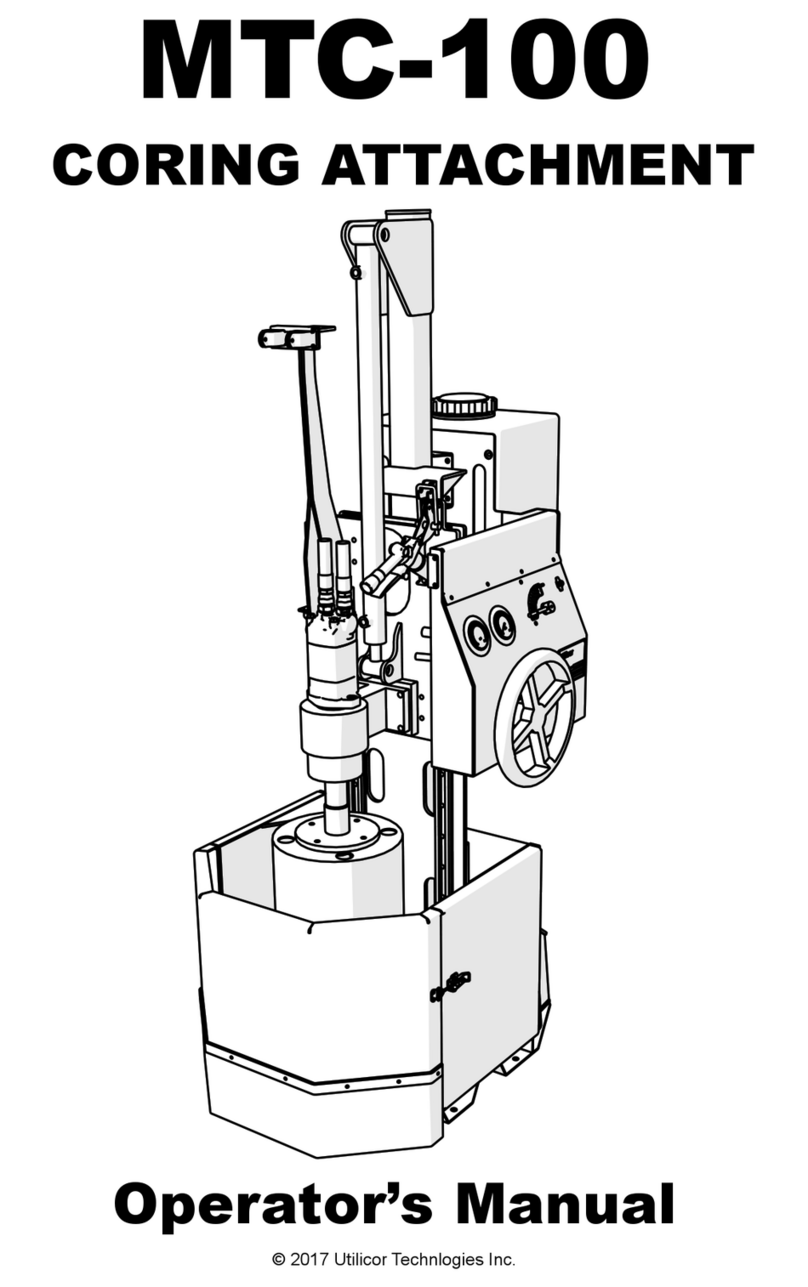
Utilicor
Utilicor MTC-100 Operator's manual
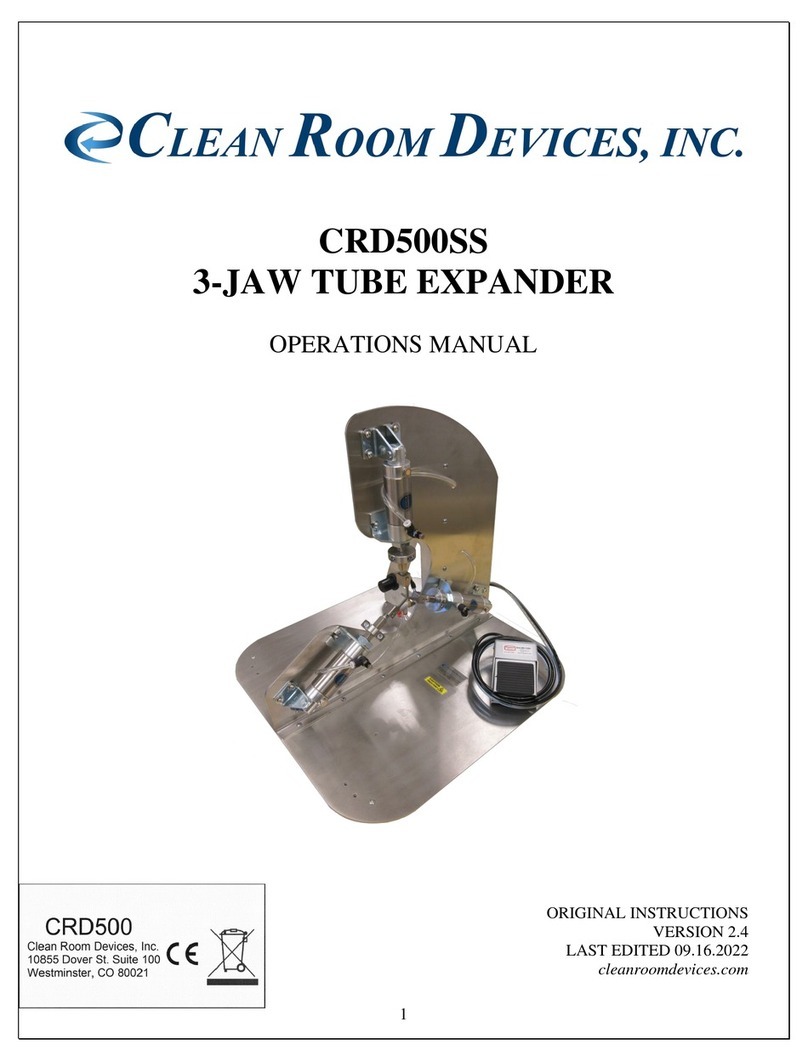
CLEAN ROOM DEVICES
CLEAN ROOM DEVICES CRD500SS Operation manual
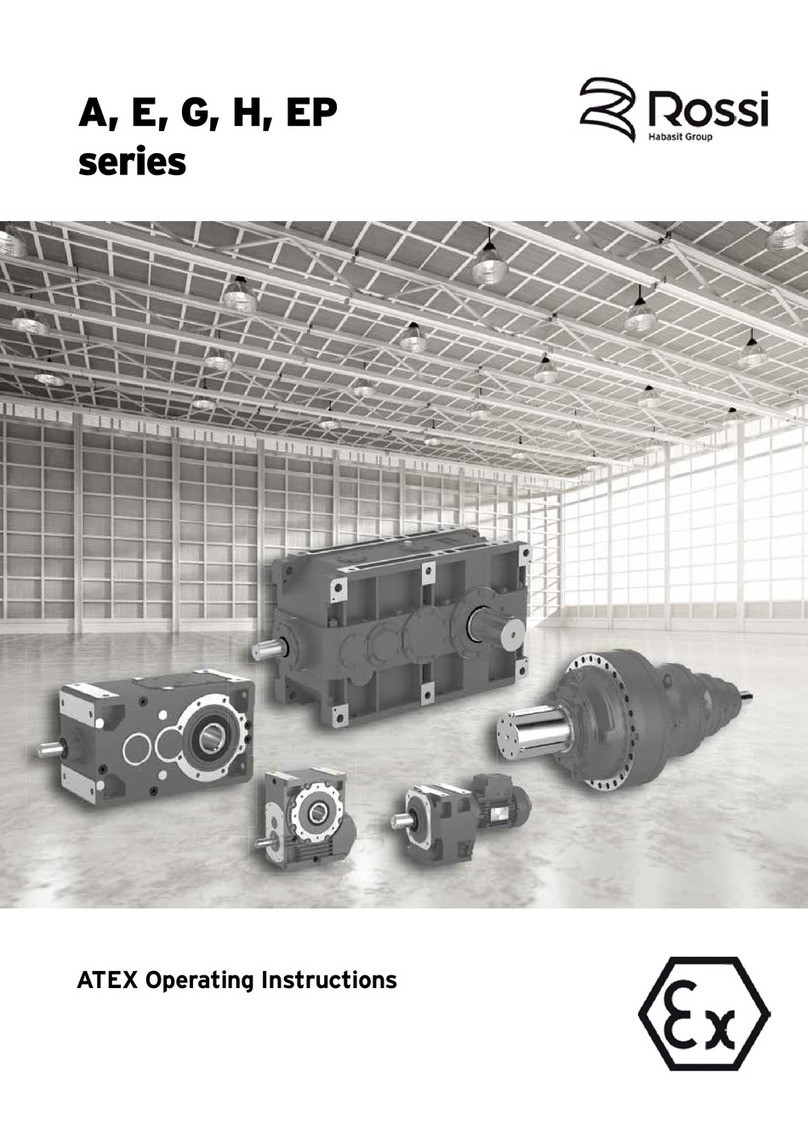
Habasit
Habasit Rossi A Series operating instructions
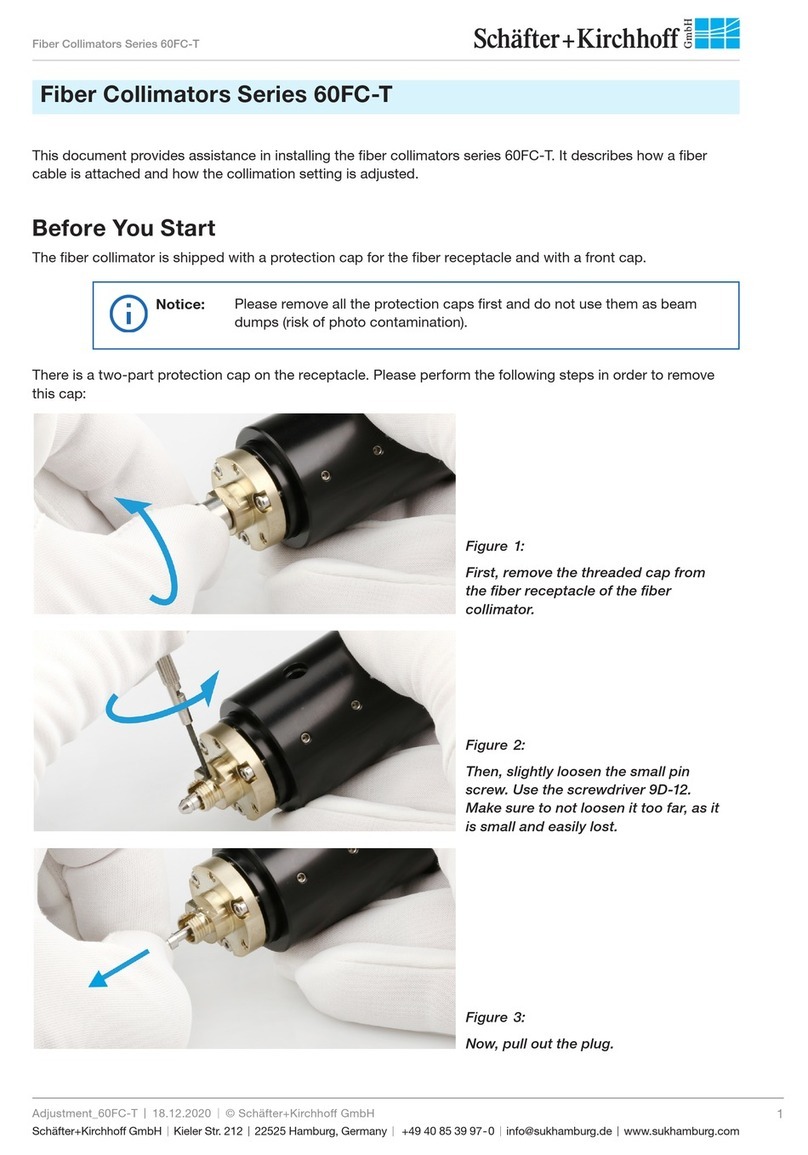
Schäfter+Kirchhoff
Schäfter+Kirchhoff 60FC-T Series quick start guide
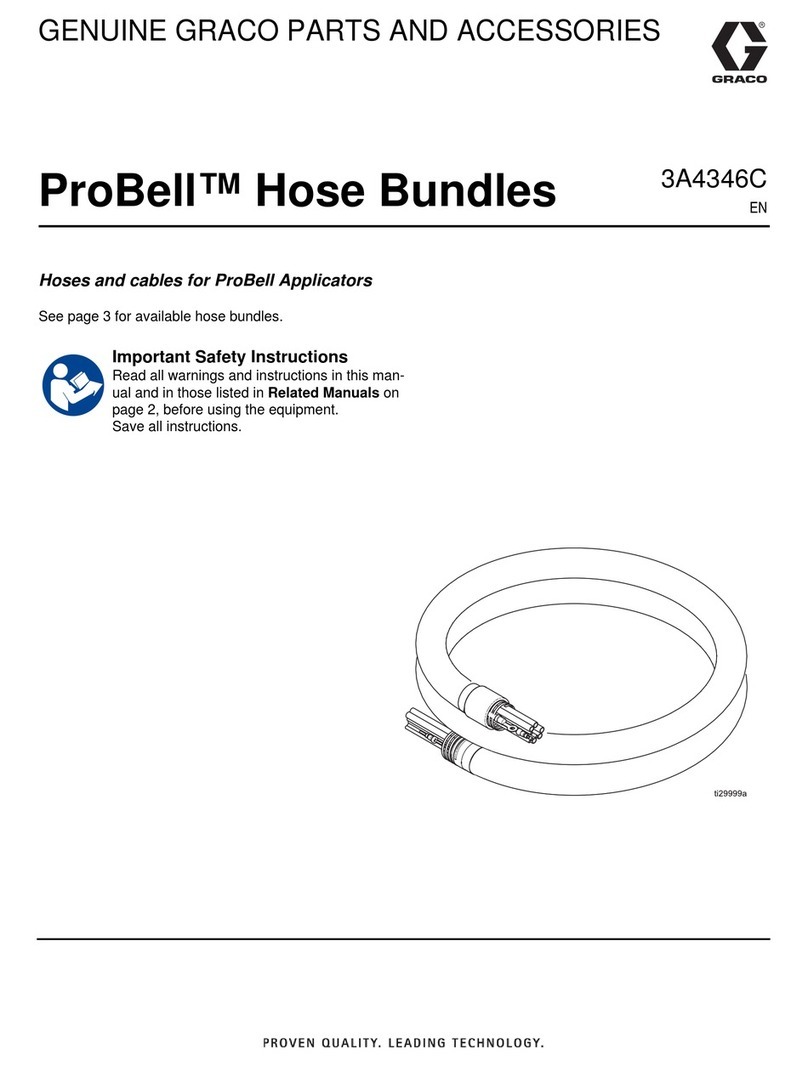
Graco
Graco ProBell 24Z168 quick start guide
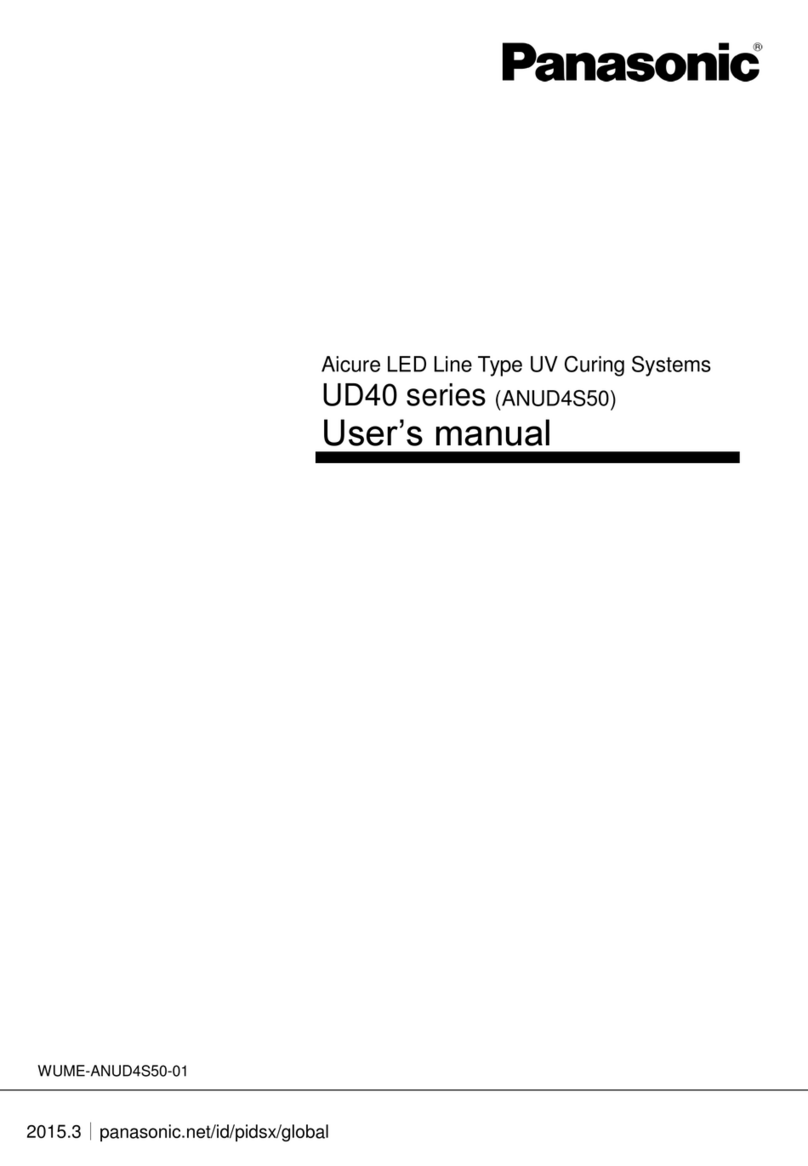
Panasonic
Panasonic Aicure UD40 Series user manual

